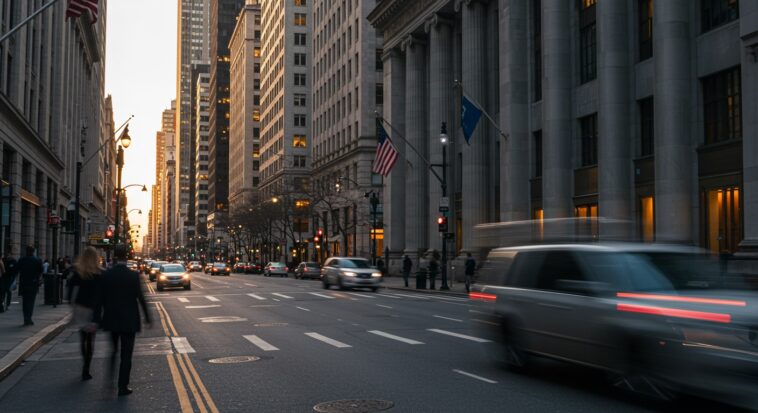A wave of stock market ups and downs swept through Wall Street on Friday, leaving investors with a classic mix of signals. As traders dialed back their hopes for a quick interest rate cut, the Dow Jones Industrial Average came tantalizingly close to hitting a new record, thanks to a significant surge. However, the broader S&P 500 and the tech-heavy Nasdaq Composite took a hit, reflecting a growing sense of caution settling over the markets.
It’s a puzzling situation. On one hand, there’s a decent, if not stellar, retail sales report, while on the other, consumer sentiment has noticeably dipped. This tug-of-war is creating an atmosphere of genuine uncertainty, a stark contrast to the unrestrained optimism that fueled a recent two-day rally.
The Fed’s Shadow and Retail’s Reality Check
The recent jitters in the market can be traced back to the same culprit that’s been influencing trading for months: the Federal Reserve. Just when Wall Street thought a September rate cut was a sure thing, new economic data came in and dashed those hopes. This week’s unexpectedly high wholesale inflation numbers and a surprisingly strong retail sales report have led to a significant shift in expectations.
“The market’s been acting like a teenager with a new credit card—ready to spend and expecting no consequences,” remarked Jane Chen, chief economist at Cornerstone Asset Management. “The recent data, especially the producer price index, is like a parent stepping in and saying, ‘Not so fast.’ We’re now caught in a tug-of-war between solid economic figures and the market’s craving for easier money.”
According to the latest data from the U.S. Census Bureau, retail sales rose by 0.5% in July. While that’s a tad below the economists’ forecast of 0.6%, it’s still a solid performance, indicating that American consumers, after a spring of tightening their belts, still have some fuel left in the tank. However, that optimism was dampened by another report showing that consumer sentiment took a hit in August, with long-term inflation expectations on the rise. It’s a classic case of what people are doing versus how they’re feeling, and right now, the mood is definitely getting gloomier.
Corporate News Drives Dow’s Rally
While the overall market picture was a bit chaotic, a few standout corporate stories really grabbed attention, especially on the Dow. A regulatory filing showed that Warren Buffett’s Berkshire Hathaway had purchased 5 million shares of UnitedHealth (UNH). This news sent the healthcare giant’s stock skyrocketing, helping to push the Dow toward a new all-time high and highlighting the lasting impact of the “Oracle of Omaha.”
On the flip side, chip stocks were quite the mixed bag. Intel (INTC) shares surged following a Bloomberg report that the Trump administration might invest in the company using funds from the CHIPS Act. This came just days after President Trump had a meeting with Intel’s CEO—a surprising turnaround after he had publicly called for the CEO’s resignation the week before. It served as a clear reminder of how quickly political dynamics can shift in certain sectors.
However, the overall sentiment in the industry was anything but optimistic. Applied Materials (AMAT), a major player in the semiconductor equipment market, saw its stock dive 14% after it released a gloomy forecast for its fourth quarter. The company pointed to weak demand in China, raising alarms about the potential broader effects of tariff risks and the global tech slowdown.
Looking Ahead
The next few days are set to be influenced not only by economic reports but also by significant global political events. The markets are on edge, eagerly anticipating the results of an important meeting between President Trump and Russian President Vladimir Putin, concerned about any geopolitical repercussions that might further shake an already unstable market.
“This situation goes beyond just the Fed’s upcoming decisions,” pointed out Frank Reynolds, a seasoned market strategist. “We’re looking at a mix of domestic economic indicators, political strategies, and international news. Investors find themselves in a tug-of-war between a robust economy and a host of unpredictable factors. It’s a challenging period, and that volatility is likely here to stay for a while.”



